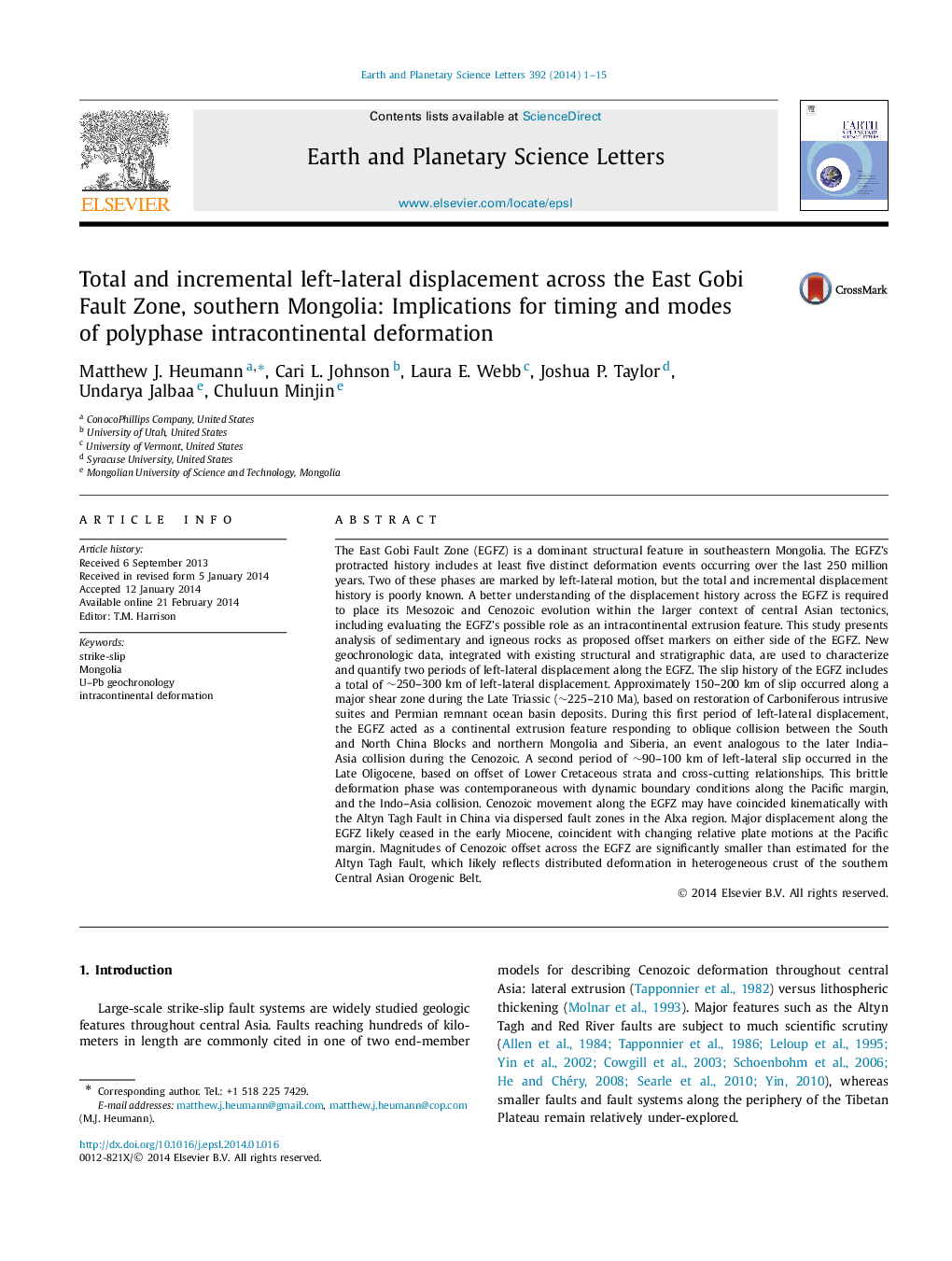| کد مقاله | کد نشریه | سال انتشار | مقاله انگلیسی | نسخه تمام متن |
|---|---|---|---|---|
| 6429469 | 1634764 | 2014 | 15 صفحه PDF | دانلود رایگان |
- Approximately 150-200 km of slip occurred along the East Gobi Fault Zone in the Late Triassic
- Cenozoic offset across the East Gobi Fault Zone is much less than estimated for the Altyn Tagh Fault
- Dissected sedimentary basins are viable piercing points for fault zone displacement calculation
The East Gobi Fault Zone (EGFZ) is a dominant structural feature in southeastern Mongolia. The EGFZ's protracted history includes at least five distinct deformation events occurring over the last 250 million years. Two of these phases are marked by left-lateral motion, but the total and incremental displacement history is poorly known. A better understanding of the displacement history across the EGFZ is required to place its Mesozoic and Cenozoic evolution within the larger context of central Asian tectonics, including evaluating the EGFZ's possible role as an intracontinental extrusion feature. This study presents analysis of sedimentary and igneous rocks as proposed offset markers on either side of the EGFZ. New geochronologic data, integrated with existing structural and stratigraphic data, are used to characterize and quantify two periods of left-lateral displacement along the EGFZ. The slip history of the EGFZ includes a total of â¼250-300 km of left-lateral displacement. Approximately 150-200 km of slip occurred along a major shear zone during the Late Triassic (â¼225-210 Ma), based on restoration of Carboniferous intrusive suites and Permian remnant ocean basin deposits. During this first period of left-lateral displacement, the EGFZ acted as a continental extrusion feature responding to oblique collision between the South and North China Blocks and northern Mongolia and Siberia, an event analogous to the later India-Asia collision during the Cenozoic. A second period of â¼90-100 km of left-lateral slip occurred in the Late Oligocene, based on offset of Lower Cretaceous strata and cross-cutting relationships. This brittle deformation phase was contemporaneous with dynamic boundary conditions along the Pacific margin, and the Indo-Asia collision. Cenozoic movement along the EGFZ may have coincided kinematically with the Altyn Tagh Fault in China via dispersed fault zones in the Alxa region. Major displacement along the EGFZ likely ceased in the early Miocene, coincident with changing relative plate motions at the Pacific margin. Magnitudes of Cenozoic offset across the EGFZ are significantly smaller than estimated for the Altyn Tagh Fault, which likely reflects distributed deformation in heterogeneous crust of the southern Central Asian Orogenic Belt.
Journal: Earth and Planetary Science Letters - Volume 392, 15 April 2014, Pages 1-15
